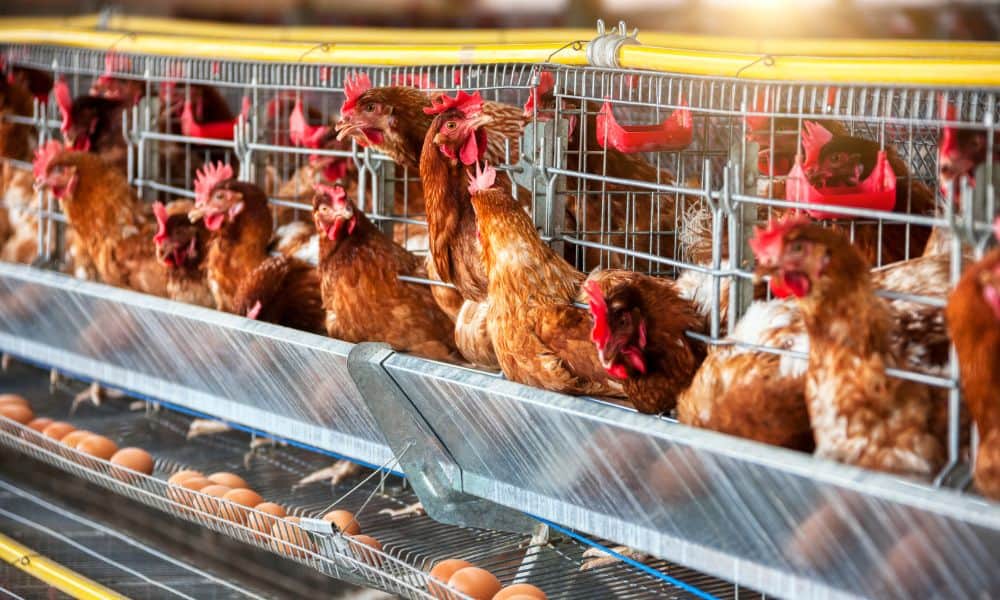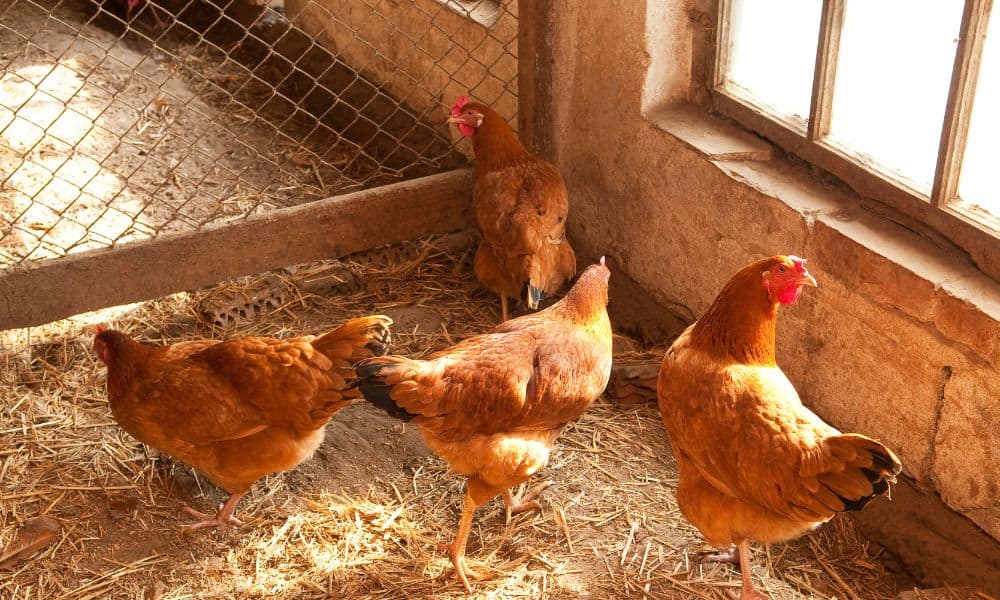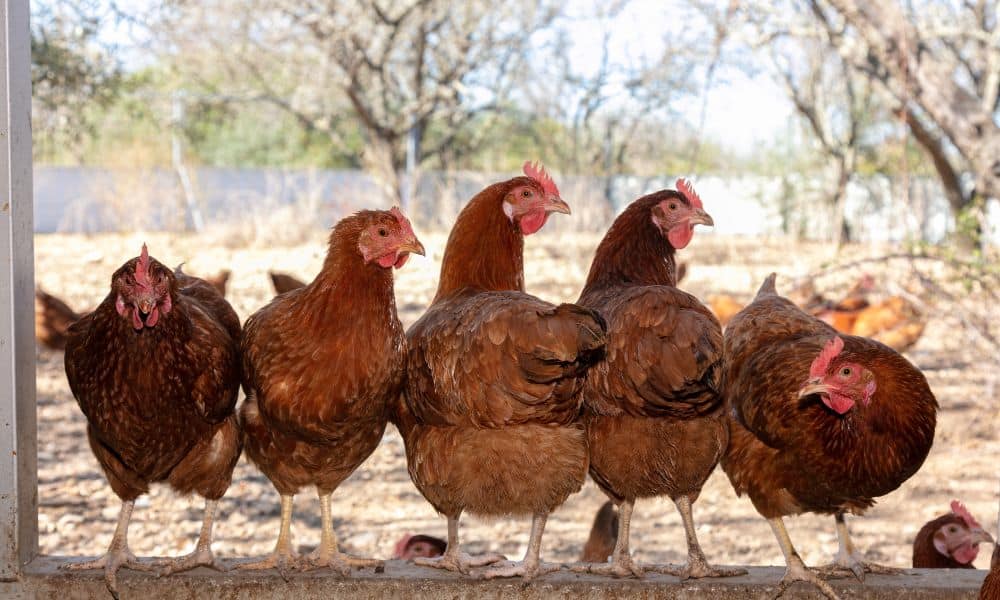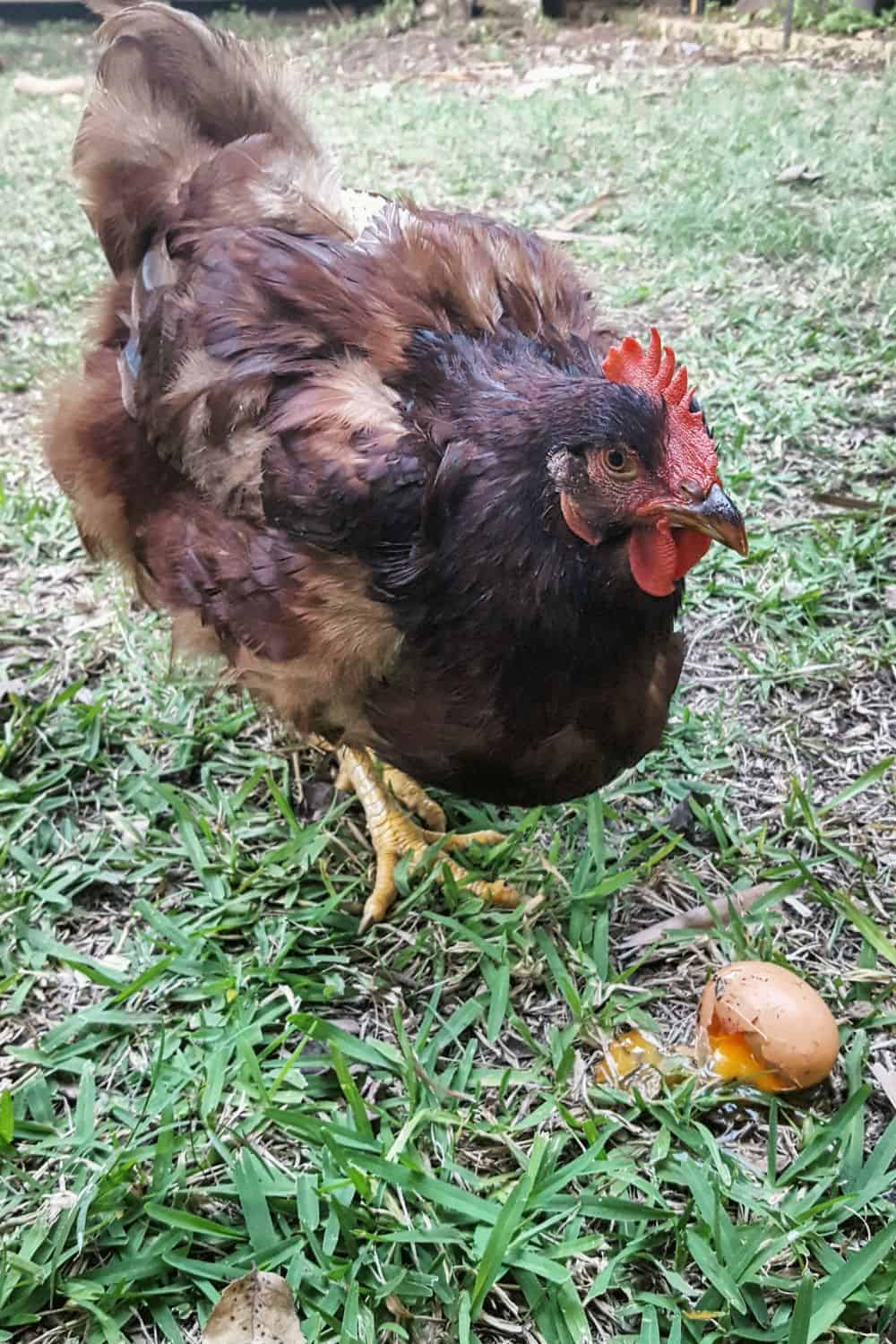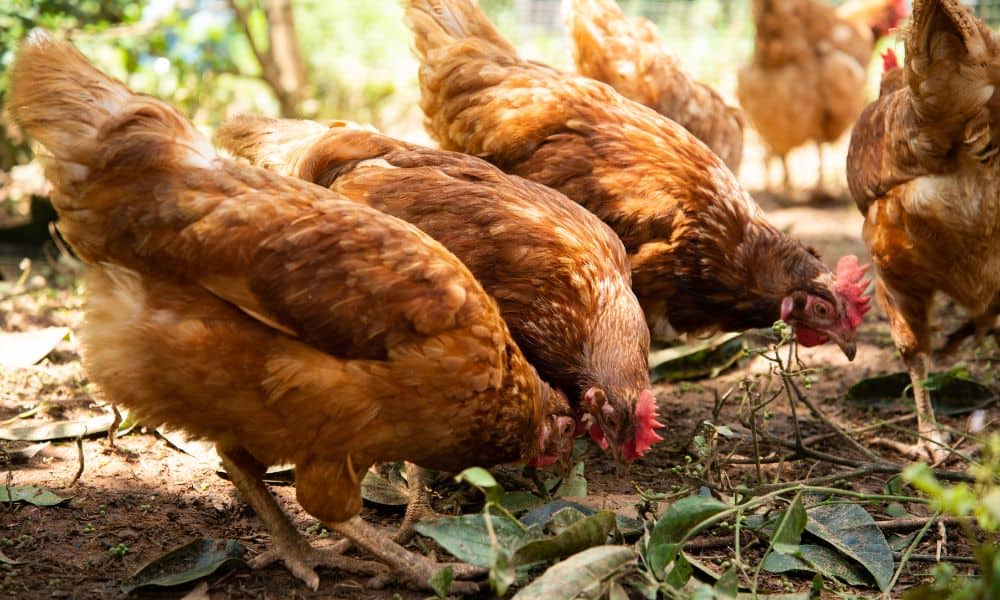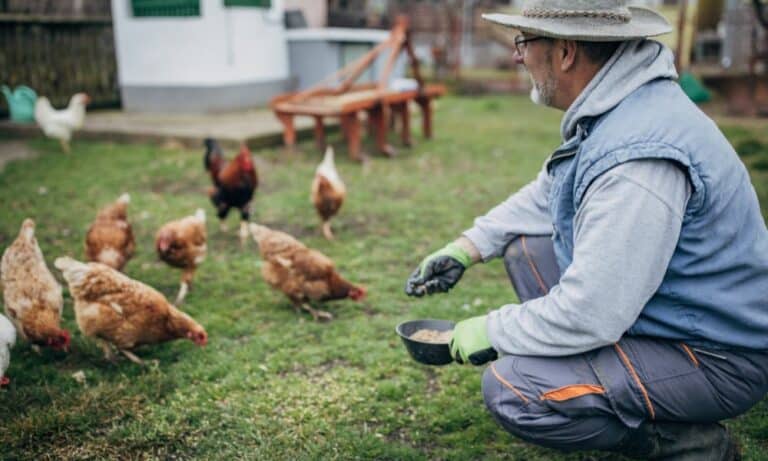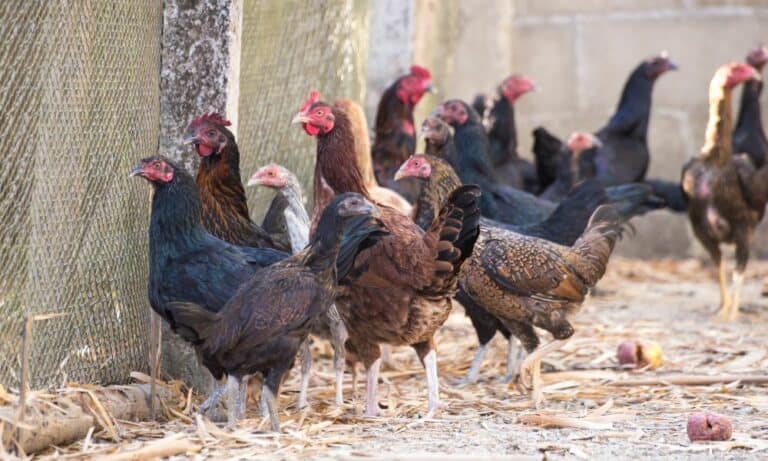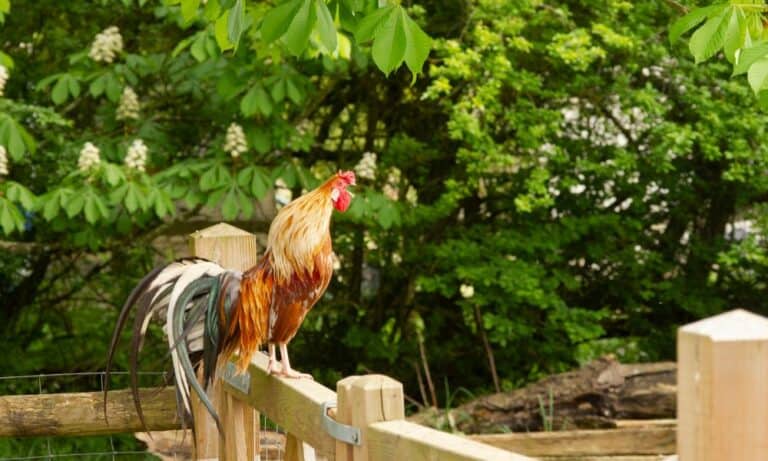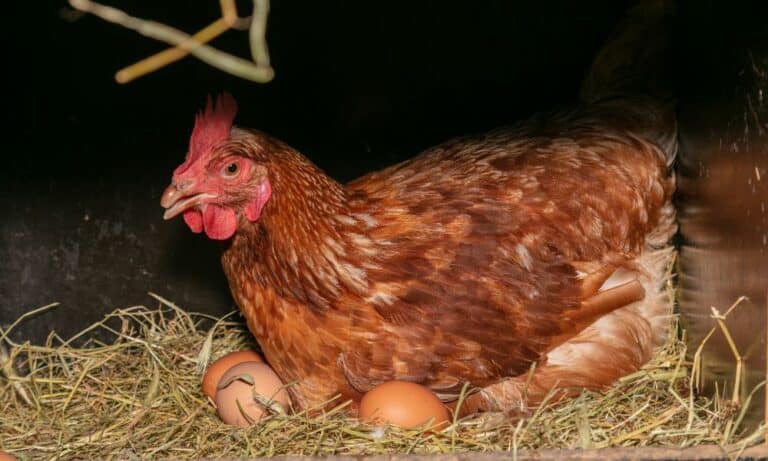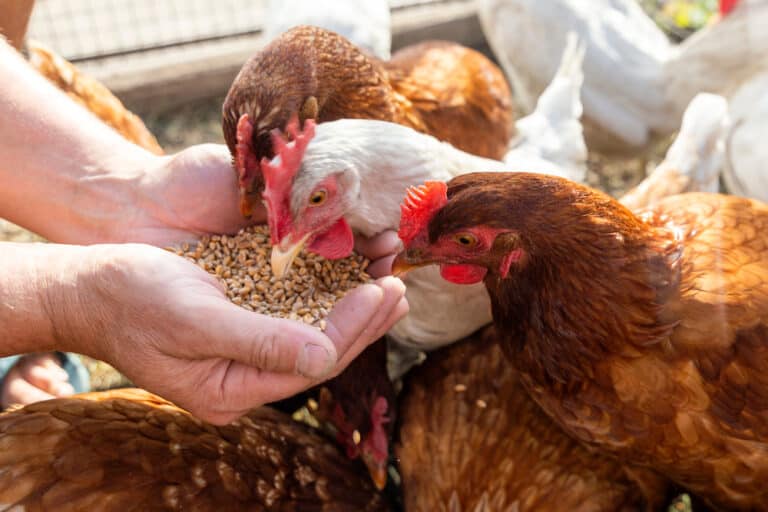Raising chickens for eggs can be a useful hobby if you have enough space in your yard and fulfill legal requirements about keeping poultry. One crucial issue is estimating the adequate number of hens necessary for the desired production in your homestead.
So, you should ask yourself – How many chickens do I need for eggs, before forming the flock. It typically depends on the chicken breed, the annual egg production per hen, and the number of family members. In most cases, an average family of four can fulfill all needs for eggs when growing 3 to 5 hens in their yard.
The number of chickens you need for eggs |
|
| Required eggs per week | Hens number |
| 12 | 3 to 4 |
| 24 | 5 to 6 |
| 36 | 7 to 8 |
| 48 | 9 to 10 |
| 60 | 11 to 12 |
| 72 | 13 to 14 |
How Many Hens Do You Need for Eggs?
The first things to estimate are how many eggs you want to get weekly and the chosen chicken breed’s egg laying. It would help if you based a calculation on 200, 250, or 300 produced eggs annually per hen.
Check in the table how many eggs to expect weekly, depending on the hen laying capacity, and then calculate how many hens you need. These data allow you to determine your needs quickly and whether you need more or fewer hens.
The number of needed hens based on their laying capacity |
|||
| Hen number | Annual laying capacity per hen | ||
| 300 eggs per year | 250 eggs per year | 200 eggs per year | |
| 1 | 6 eggs per week | 5 eggs per week | 4 eggs per week |
| 2 | 12 eggs per week | 10 eggs per week | 8 eggs per week |
| 3 | 17 eggs per week | 14 eggs per week | 12 eggs per week |
| 4 | 23 eggs per week | 19 eggs per week | 15 eggs per week |
| 5 | 29 eggs per week | 24 eggs per week | 19 eggs per week |
| 6 | 35 eggs per week | 29 eggs per week | 23 eggs per week |
| 7 | 40 eggs per week | 34 eggs per week | 27 eggs per week |
| 8 | 46 eggs per week | 38 eggs per week | 31 eggs per week |
| 9 | 52 eggs per week | 43 eggs per week | 35 eggs per week |
The equation is simple:
A total chicken number x 2/3 = The number of eggs you need daily
The quickest way to determine how many hens you should buy is to base the equation on the chicken breed and your needs.
The calculation should rely on the hen laying capacity and the number of eggs you want to get daily. For instance, imagine that you need six eggs a day. In this case, the calculation should look like this:
X hens x 2/3 = 6 eggs daily
X = 9
The calculation says that you need nine hens to reach your goal.
Factors that Affect the Required Hen Number
No one can precisely predict how many eggs to expect from your flock since hens rarely lay eggs every day of the week. So, assessing the correct number of hens for a desired productivity can be challenging, despite the math.
However, you can determine an approximate number of necessary chickens for this purpose based on a few factors. Let’s see.
1. Hen age
Most hens begin egg production when they are 5 to 6 months old and reach their peak within the first two years. You can expect them to reduce laying and egg size and quality over time.
Your hens will gradually stop producing eggs after the age of five. The only way to secure continuous production is to replace about half of your flock with new pullets every two years.
2. Chicken breed
As you know, you can grow chickens as pets and for consumption, so there are those intended for eggs, meat, or double purpose. If your plan is to produce as many eggs as possible, you should purchase one of the best-laying breeds.
Annual egg production per chicken breed |
|
| Breed | Number of eggs per year |
| Lohmann Brown | 320 |
| Isa Brown | 300 |
| Golden Comet | 250 to 300 |
| Leghorn | 250 to 280 |
| Rhode Island Red | 250 |
| Ameraucana | 250 |
| Sussex | 250 |
| Australorp | 250 |
| Barnevelder | 200 |
| Ancona | 200 |
| Plymouth Rock | 200 |
| Buff Orpington | 180 to 280 |
| Marans | 180 to 220 |
| Hamburg | 150 to 200 |
The more eggs a particular hen type lays, the fewer chickens you need to breed. For instance, Lohmann Brown, Isa Brown, and Golden Comets lay approximately 300 sizable eggs annually.
So, it is enough to have 3 to 5 hens to fulfill an average family’s needs. On the other hand, be aware that breeds like Japanese Bantams, Ayam Cemani, and Sultan are poor layers. They produce only a couple of dozen eggs per year.
3. Flock size
The perfect hen for you is the one that provides enough eggs for your family. For instance, if you can keep only a few chickens but want a certain egg number, you should buy the best layers.
When you plan to get some eggs for your family and use chickens for meat, the best solution is double-purpose breeds. In that case, you need a more sizable flock to reach desired egg number. Finally, you can keep hens as pets and get some eggs as a bonus.
Be aware that even the best-laying hens never lay eggs every single day. Therefore, the best you should count on is that two-thirds of chickens in the flock lay an egg in a day.
In other words, you will get approximately 5 to 6 eggs daily if you have nine laying hens. Since an average family needs up to 20 eggs weekly, keeping more than four hens for a regular egg supply is often unnecessary.
4. Diet
Only a well-balanced diet can result in hens producing the highest possible number of quality eggs a year. For instance, laying hens require layer feed with at least 16% protein.
Only one percent less of this nutrient leads to reduced egg production. Besides, only enough vitamin D, calcium, and phosphorus can provide a desirable hard eggshell.
5. Climate
Be aware that most hens decrease or even stop egg-laying during the fall and winter. The production becomes regular with warmer weather in the spring. In that period, you can solve the issue of insufficient eggs by buying one to two extra hens.
Another option is to keep eggs in the fridge for two to three winter months or freeze them after removing shells. Finally, you can pickle eggs and use them within six months.
If you live in a cold region but want undisturbed egg production throughout the year, your only option is to grow cold hardy breeds. On the other hand, you should choose light-breed, heat-tolerant chickens if you live in a warm climate.
There is one more problem with sunlight length. Since hens require 12 to 14 hours of light daily, you should consider adding artificial light into the coop during the winter.
If you don’t want to slaughter your flock after two years, forcing hens into overproduction during cold months may negatively affect their health. Their bodies need time to recover before continuing egg-laying in the spring.
6. Molting
Adult hens go through an annual molt in the autumn and make a pause in egg production during that period. The growth of a new feather set requires high protein and energy levels, reducing its use for egg laying. In some cases, increasing the protein content in a regular diet can mitigate the decline in production.
7. Chicken health condition
Even though chickens are self-sustainable, they can get sick. The rule of thumb is that only healthy hens lay eggs. As expected, most health issues affect egg production and reduce their number and quality.
8. Available space
Regardless of your egg needs, the available space affects the size of the flock you can raise. For instance, having only ten nesting boxes makes raising fifty chickens impossible.
Average hens require 4 sq ft (0.37 m2) of space in the coop and about 8 to 10 sq ft (0.74 – 0.93 m2) of space in the chicken run. Besides, they need vertical space to roost.
9. Your time
Raising chickens require your time and effort. Having a few low-maintenance hens is enough if you only want to get healthy eggs for your family. On the other hand, caring for a sizable flock is a full-time job, so you should know your goals before buying chicks.
10. Extra eggs
There are two reasons to produce more eggs than your family needs. The first one is to sell them and make an extra profit, and you can also collect them to get new chicks. Sometimes, having more eggs than a calculation shows is vital for a family when you make cakes regularly or often have guests.
11. Local regulations
In some cases, your wishes and the law can be the opposite. In such a case, you can breed only as many chickens as the law allows. Therefore, check possible restrictions on flock size in your area since the limited number of hens requires purchasing the best layers.
Summary
Since you don’t need eggs every day of the week, you should estimate an average consumption before buying hens. Experts assess that one family of four needs approximately 3 to 5 hens to fulfill all their needs for eggs, but that number depends on numerous factors.

